The CERMAV spectroscopy platform is self-service.
It has different equipment such as:
A UV/Visible spectrophotometer TECAN Spark 10M microplate reader.
This device has different detection modes, absorbance, UV/Visible spectra included and luminescence.
It makes it possible to perform DNA or protein quantifications in small volumes, enzymatic kinetics, scans varying over a wavelength range between 200 and 1000nm….

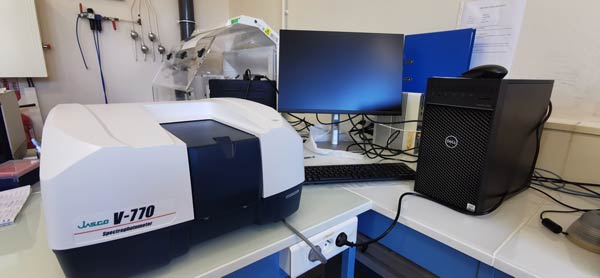
A Jasco V-770 UV/Visible/NIR spectrophotometer
The spectrophotometer has a double beam and a double monochromator. It has an extended range from UV/Visible to near IR (190-2700nm).
Specific slit sizes allow the use of low volume cuvettes without diffraction. It is also possible to work on solid samples with the integrating spheres, which collect the scattering of light transmitted or diffused by the sample.
A multi-cuvette rack with temperature regulation by Peltier effect allows the temperature of the sample cuvette to be adjusted between 0 and 100°C.
A BMG Labtech Clariostar microplate reader spectrofluorimeter.
The device is equipped with 2 detection systems: fluorescence and fluorescence polarization.
Fluorescence is based on photoluminescence, a process of glowing and emitting light. It is a physical process in which light is emitted after being absorbed by a substance. Fluorescence intensity indicates the amount of light (photons) emitted. This is the extent of emission and it depends on the concentration of the excited fluorophore.
Fluorescence can be read from 320 to 730nm.
Unlike Fluorescence Intensity which focuses on quantifying emission intensity at a specific wavelength and neglects its polarization, Fluorescence Polarization specifically analyzes output of emission intensity from different light planes. polarization. Fluorescence polarization is typically used to assess biomolecular interactions such as protein-protein and protein-DNA binding, as well as enzyme activity. We have a set of 3 polarization filters:
- Excitation = 482.16
- dichroic = 505LP
- Transmit = 530.4
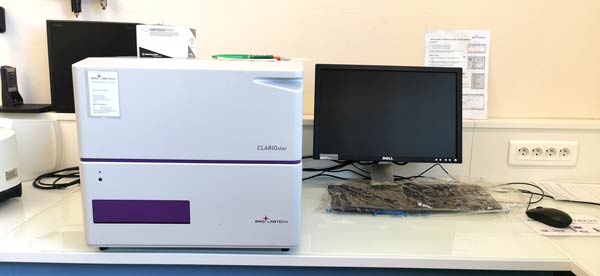
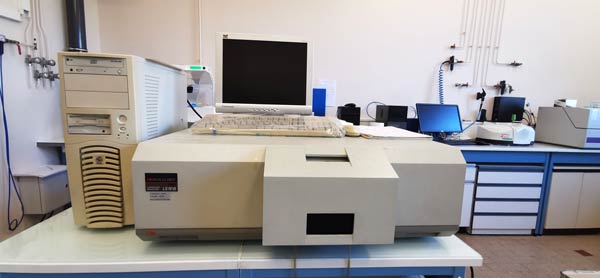
A Perkin Elmer LS 50B spectrofluorimeter
The LS50B is a fluorescence/luminescence spectrophotometer with a high pressure pulsed Xenon source. It is equipped with excitation side and emission side monochromators and is capable of excitation (200-800 nm) and emission (200-900 nm) scans. The software offers four modes of operation: single scan, accumulation (for use with weak or low concentration fluorophores), kinetic or 3D mode. There is no temperature control.
A Perkin Elmer Spectrum Two FTIR (Fourier Transform Infrared) spectrometer
It is suitable for the control of polymers and the characterization of materials.
Infrared absorption spectrometry is a primarily qualitative method of analysis that probes the vibrations of molecular bonds. This technique makes it possible to determine the nature of the chemical bonds and functional groups present in a molecule. It is widely used for the characterization and identification of organic and mineral molecules. The Beer-Lambert law is valid in the field of infrared radiation, so this method is also quantitative.
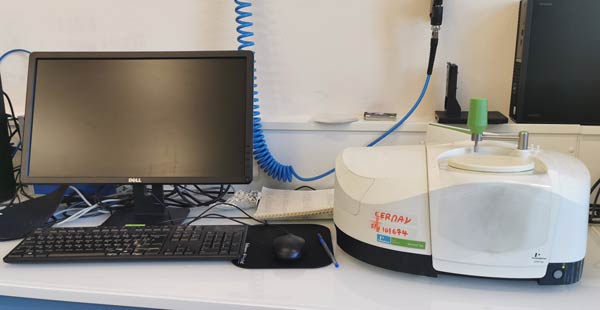
Perkin Elmer 341 Polarimeter
The polarimeter is based on Biot’s law which gives the expression of the optical rotation as a function of the concentration of the solution and the specific optical rotation of the enantiomer.

UV-Vis Cary 60 spectrophotometer
The Cary 60 UV-Vis spectrophotometer has a wavelength range of 190 to 1100 nm that can be scanned in less than three seconds.
It is equipped with a xenon source lamp that does not require any preheating.
Measurements possible up to 80 points per second
Measurement method by scan or point by point.
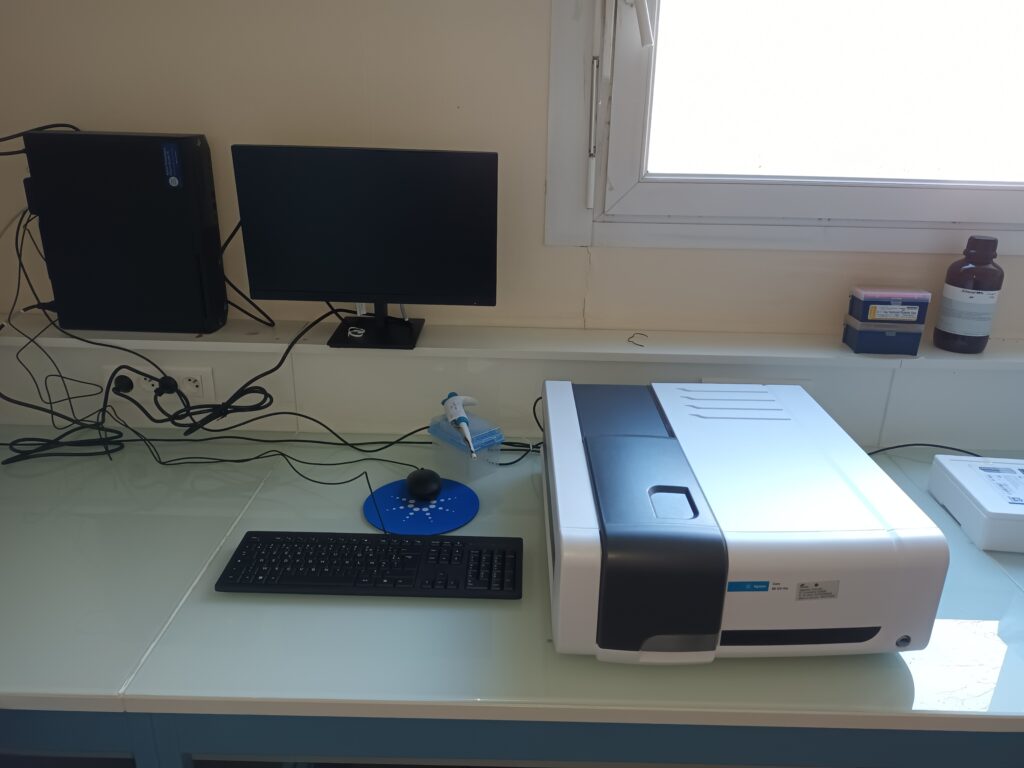
Contacts :
Scientific Manager :
Yoshiharu Nishiyama yoshiharu.nishiyama@cermav.cnrs.fr
Technical managers :
Emilie Gillon emilie.gillon@cermav.cnrs.fr
Mélanie Touvrey-Loiodice melanie.touvrey-loiodice@cermav.cnrs.fr




